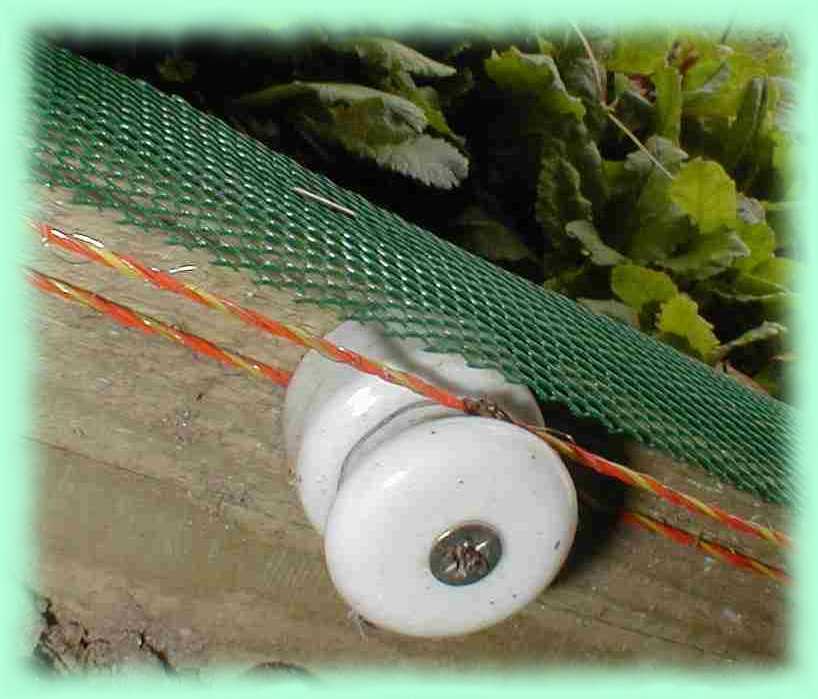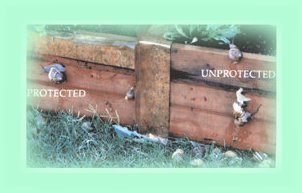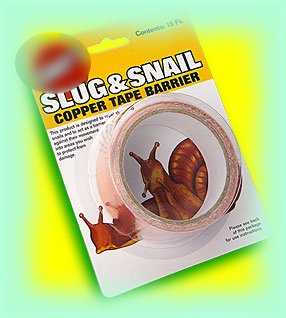| | | |
The leak-preventer
systems
Last
update: 20/06/2008
To date, there are several
systems of fence which I will try to present to you.
Each
method has its advantages and its disadvantages. I will detail
them as much as possible.
The
electric fence:
Easy
to set up, it consists in fixing a ribbon made up of several wire
stainless (4,8, etc.) on a support (insulating preferably). These wire
are then connected either to a transformer (12V AC) or to a battery of
car (13,8V cd.).
We
can also carry out an electric fence without ribbon:
 | | Source:
starch.dk/isi/energy/ |
Some examples of electric fences (Thank you for Backo and
J.Matéo for their collaboration):
The battery:
Advantages:
- current
capacity in the event of cut of electricity.
- facility of
displacements.
Disadvantages:
- high amperage.
- to think of
checking the load.
The transformer:
Advantages:
- less
expensive than the battery.
- deliver AC
current.
Disadvantages:
- it's needs a source
220V AC in the vicinity (EDF).
- do not function in
the event of cut this current any more
The
AC current (AC) seems stressless for the snails than D.C.
current (cd.).
Personally, I prefer the transformer
system provided with
the electronic chart which makes it possible toppel over towards a
spare
battery in the event of cut sector (uninterrupted food). This
chart will be described in electronic section of this site.
In
the 2 cases, electricity have the disadvantage of roasting small snails
(youthful). Moreover, the slugs not being able to curl up in their
shell, roast on the ribbon and cause a "bridge" that the snails will
not fail to take.
In addition, the snails
start to drool when they are made "tickle". The drool remains then on
the electric ribbon. This ribbon should be frequently cleaned.
It's then slightest things to do for our adored snails !!
The
chemical fence (grease + salt):
The
mixture consists of 50% cooking salt and 50% of grease. We can also add
soft soap.
The "paste" obtained is deposited on the
support inside the
"escargotière" (wood, concrete, asbestos cement, etc...) on
a 5 centimetres height tape approximately.
This method is
satisfactory, but it's necessary to
think of protecting this "ribbon" against water (sprinkling and rain).
A
turned over gutter can make the deal perfectly. In this case, the paste
is fixed on the internal part of the gutter.
The
copper fence:
The
principle (I did not check!): copper reacts with
the drool sweated by snails to form an electrical current which pushes
back them.


Remain to test.... The mechanical
standard
fence
"Helitex":
The
mechanical fence with plastic film:
On
the wall of the "escargotière" a cleat out of wooden is
fixed which a fine plastic ribbon approximately a 10 cm is
fastened height.
The
mechanical fence with aluminium mosquito net:
Principle: an aluminium mosquito net is posed on a
cleat . It is necessary to withdraw two horizontal lower wire
of the band over the entire length and that's all folk's !
Moreover, you can add
electricity on the mosquito net to increase the system effectiveness
(it + on netting, - on the ground).
The
watery fence:
Principle:
the "escargotière" is surrounded by of a small brook which
the snail will not cross! This principle can be carried out with
gutters for example.
Not tested!
| | | | |
|